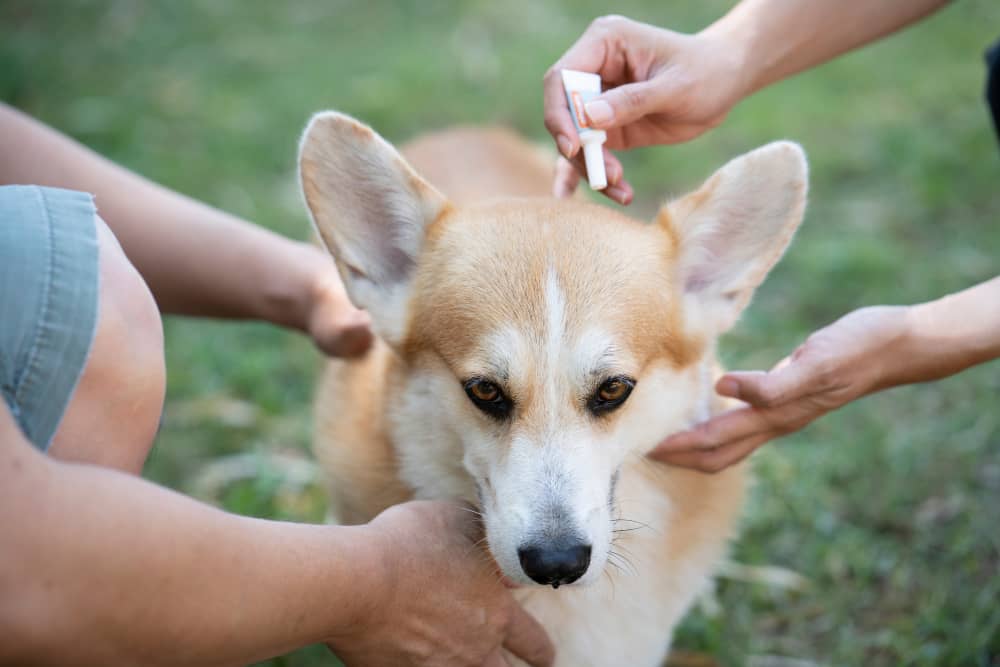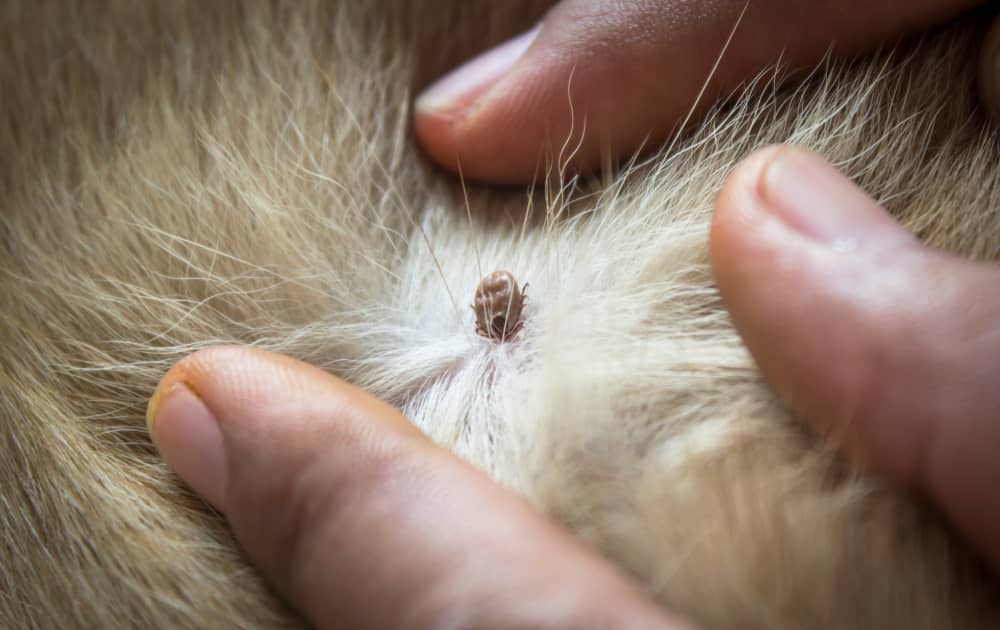Why It’s Time To Advocate for Alternative Flea Treatments
As a pet owner, keeping your furry friends free from pesky parasites like fleas is a top priority. These insects carry infectious diseases while feeding through blood. Fleabites can cause allergic reactions in humans and animals, and, in severe cases, anemia from blood loss.
Fleas reproduce rapidly and can be almost impossible to eliminate without pesticides. That’s why many conventional flea treatments contain chemicals that may be harsh on you and your pets. It’s crucial to find natural options that are safer and just as effective to minimize such risks. If you’re wondering whether such products exist, this blog is for you.

Less harmful flea treatment options
With some experimentation, many pet owners can find success using plant-based flea repellants exclusively or alongside other treatments. However, for your peace of mind, it’s important to ask your veterinarian about non-toxic approaches.
Below, you’ll find some of the most popular options for safely keeping pests, particularly fleas, at bay:
1. NEOVET Topical Flea and Worm Treatment
Although NEOVET contains imidacloprid and moxidectin, these chemicals are approved by the Australian Pesticides and Veterinary Medicines Authority and the US Food and Drug Administration for treating pest infestation. Moxidectin is a compound used to treat heartworm, while imidacloprid is effective in treating and preventing fleas.
A 2020 review, which cited various studies in different parts of the world and covered various timelines, put imidacloprid’s effectiveness rates from 70.5-98.8%. It’s also less toxic to humans and other mammals, including our pets, than insects, particularly fleas.
2. Flea treatments with botanical oils
Organic treatments like essential oils and silica powder can help prevent and eliminate infestation without harming your pets. It may take more effort to apply these plant-based repellents regularly. However, for health-conscious fur parents, the extra effort is worthwhile to avoid prolonged pesticide exposure for everyone.
3. Ark Naturals Neem Protect Shampoo and Spray
These products rely on the power of neem oil and other botanical-derived fatty acids to repel fleas and ticks. These chemical-free items are safe even if your pets accidentally lick their fur before it dries.
4. Sentry Natural Defense Flea & Tick Squeeze-On
This product contains organic ingredients, primarily peppermint, cinnamon, lemongrass, and thyme oils, to kill fleas and disrupt their life cycle.

5. Skout’s Honor Flea + Tick Dog & Home Spray
This organic pet spray contains cedarwood and peppermint oils to repel fleas and ticks without the harsh chemicals.
6. Wondercide Flea & Tick Concentrate
Bugs, fleas, and ticks shouldn’t call your outdoor areas home. If you want to get rid of them, consider spraying this organic product on your patio, deck, and garden. It contains sesame and cedarwood oil, and coconut or palm-oil-derived sulfates to get the work done.
Although deemed generally safe, natural ingredients don’t always mean no potential side effects. For instance, a 2020 study stated that previous research had shown about 5-9% of cats treated with essential oils from peppermint, cinnamon, lemongrass, and clove experienced adverse side effects, including seizures, lethargy, and other issues.
In most cases, alternative flea control products stack up nicely against traditional methods. In addition to being safer, they can be highly effective, economical, convenient, and better for the environment.
The case for safer options
There are other compelling reasons to consider natural flea control methods that go beyond the risks of harsh compounds. These include the following:
1. Effectiveness
Several plant-based ingredients have insecticidal properties without toxicity risks. For example, neem oil has been used to repel insects for centuries. It’s gentle to use around animals when properly diluted. Chrysanthemum flowers also produce pyrethrins, which are toxic to insects, including fleas. They’ve been used in Persia since the 1800s for treating body lice a practice that continues today as pyrethrins remain an active ingredient for most lice shampoos.
At the same time, citrus oils also have insecticidal properties and are toxic to fleas no matter their life cycle.
2. Cost considerations
Botanical sprays, powders, and shampoos are often cheaper than other options. Home remedies like salt baths and vinegar rinses save even more. So is vacuuming, which can pick up flea eggs and prevent them from hatching.
Additionally, other ways to naturally rid your indoor and outdoor areas from pests exist. For instance, you can add beneficial nematodes or small worms in your yard to kill flea eggs and larvae. Additionally, you can use a handheld steamer to blast these parasites away from their typical hiding places.
3. Convenience
Although natural flea prevention methods require more frequent applications than one-off treatments, options like sprays and shampoos make it easier. Plus, they’re available in most online and physical stores.
4. Environmental impact
From production to usage and disposal, pesticide-free flea busters don’t pollute the environment and groundwater like toxic chemicals. They help protect our planet alongside our pets.
Why do our pets get fleas?

Dogs and cats are the perfect hosts for fleas to reside in and multiply. Our fur babies have everything these little parasitic insects need to survive and thrive. These include the following:
1. A warm-blooded host
Fleas prefer the temperature of warm-blooded mammals to nourish themselves and their offspring. After detecting and latching on a host, female fleas will begin feeding within a few hours, mate, and hatch eggs within one to 10 days, depending on their environment.
2. Close quarters
These insects burrow into an animal’s hair coat and near the skin where they can’t easily be seen. This allows them to stay undetected while feeding, mating, and laying eggs.
3. Frequent outdoor exposure
Fleas can come from other animals, parks, and your yard. They can jump to their chosen host at considerable distances. That’s why pets who spend time outdoors are more vulnerable to getting fleas than those who stay indoors and in pest-free gardens. Consider cleaning your yard and calling pest control experts before planning your pet’s outdoor shelter.
4. Lack of prevention
Regular bathing or flea prevention medications help arrest pest infestation in our furry friends. For instance, a cat flea can produce more than 24 eggs daily, causing the population to spike rapidly without preventive measures.
Understanding flea behavior and biology is a great way to properly prevent and treat infestations. Consistent use of vet-recommended flea control products is key to keeping our pets safe and healthy.

Closing thoughts
It’s understandable to be wary of alternative options when conventional flea products promise powerful pest control. However, the risks posed by some of these items aren’t always clear.
Given that natural ingredients may still pose potential harm, especially to elderly, pregnant, and sensitive pets, it’s best to consult your vet when switching to or introducing natural pest elimination methods.
On the other side, it’s the perfect time to advocate for safer options, given their availability. Be less reliant on chemicals and embrace natural flea control instead. Your furry companies will thank you!



